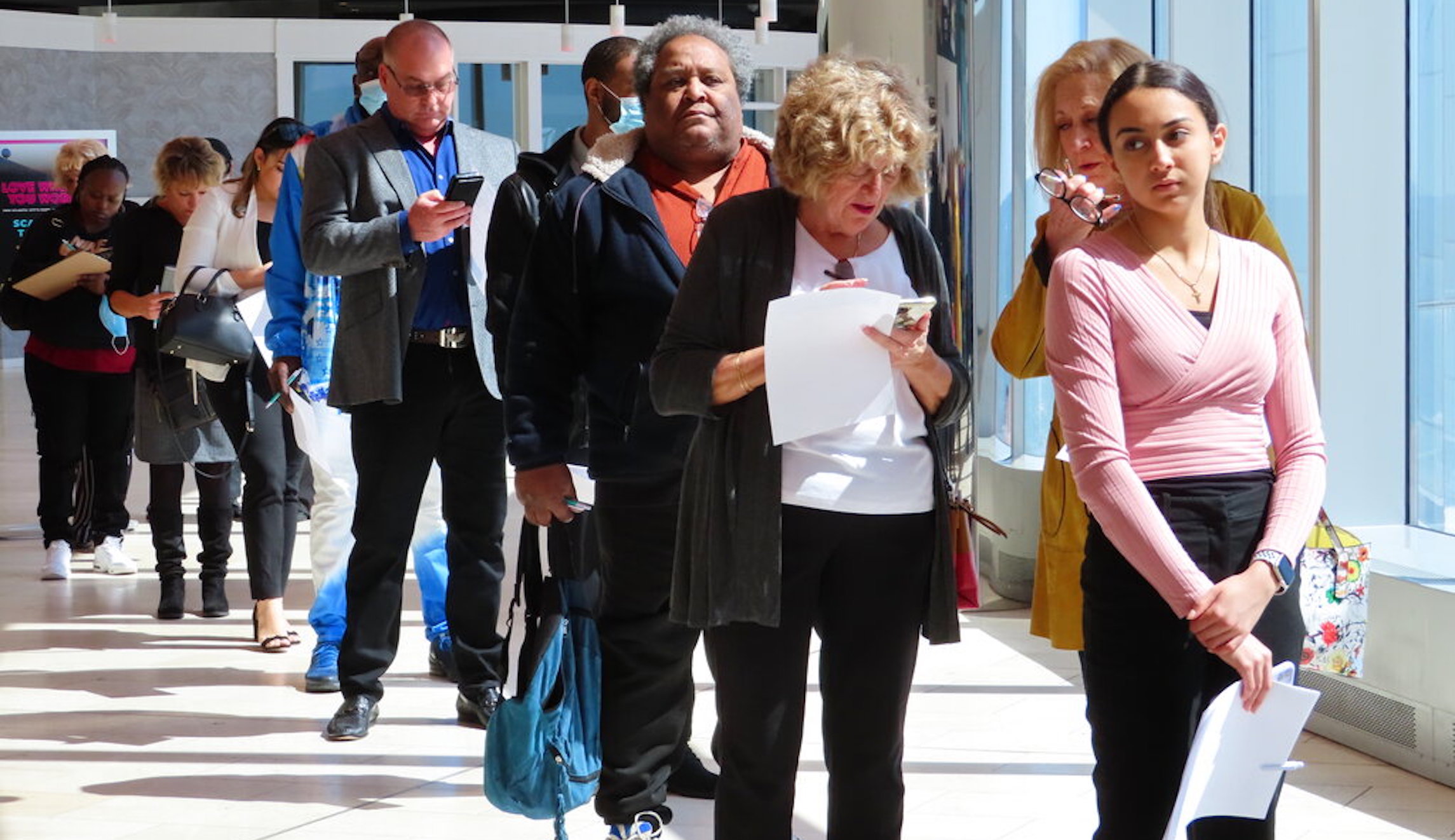


The number of new applications for unemployment benefits rose by 22,000 to 231,000 last week, the highest number of claims in about nine months.
The new numbers were reported by the Labor Department on Thursday. The uptick could be a sign that the labor market is continuing to soften due to high interest rates pursued by the Federal Reserve, which has been trying to weaken demand to drive down inflation.
Jobless claims are seen as a proxy for layoffs — if few people are claiming unemployment insurance, it suggests not many workers are getting laid off.
“One week does not a trend make, but we can no longer be sure that calm seas lie ahead for the U.S. economy if today’s weekly jobless claims are any indication,” said Chris Rupkey, chief economist at FWDBONDS, a financial markets research company. “The labor market shows some signs of rebalancing with fewer job openings posted around the country, and now company layoffs are picking up, hinting at caution on the part of companies as they weigh the outlook for the second half of the year.”
The labor market has remained remarkably resilient despite the higher interest rate environment. But the most recent monthly jobs report showed some signs of slowing down.
The economy added 175,000 jobs in April versus 315,000 the month before, and the unemployment rate rose a tenth of a percentage point to 3.9%.
Additionally, the most recent data show job openings fell 3.7% in March to just under 8.5 million, the lowest level of openings since February 2021. The job opening numbers fell below expectations, continuing a trend of slowly declining job openings over the past few years.
The Fed has raised its interest rate target from 5.25% to 5.50%, the highest since the dot-com bubble at the turn of the century. The question now is when the Fed will start cutting rates, although recent hotter-than-anticipated inflation reports have increased the odds of only one rate cut in 2024, or perhaps even none.
This week, Federal Reserve Bank of Minneapolis President Neel Kashkari, one of the voting members of the Fed’s monetary policy committee, wouldn’t rule out the possibility of another painful interest rate hike during an event.
Kashkari said the most likely scenario is “we sit here for an extended period of time,” meaning that interest rates remain at their same elevated level until it is clear whether disinflation is working. He said that if inflation does start coming down, or the labor market weakens, then that might lead to cuts.
CLICK HERE TO READ MORE FROM THE WASHINGTON EXAMINER
“Or if we got convinced eventually that inflation is embedded or entrenched now at 3% and that we need to go higher, we would do that if we needed to,” Kashkari said. “That’s not my most likely scenario, but I also can’t rule it out.”
Higher interest rates are bad news for President Joe Biden in an election year. Biden’s economic approval ratings have been hamstrung by high inflation coupled with high rates that have made buying a home or taking out a loan much more expensive for voters.
